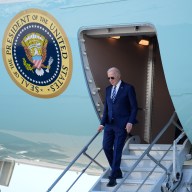The military has air power and firepower in Afghanistan, but providing Canadian soldiers with sufficient battery power is a multimillion-dollar concern for the country’s war planners, according to an extensive defence department study.
While a rifle may be the soldier’s most trusted ally, the modern force can be effectively neutralized without a steady supply of AAs. The simple alkaline battery now powers soldiers’ night-vision goggles, flashlights, radios and global-positioning systems, as well as night, thermal and laser-guided gunsights.
“It used to be that the army marched on its stomach. I think it’s changed now,” said Scott Taylor, publisher of the military magazine Esprit de Corps, who served in the Canadian army in the 1980s.
“They’ve got a lot more things that they’ve got to think about besides just feeding these guys. It’s becoming high-tech soldiering.”
The average infantry soldier on a three-day mission in Kandahar carries up to 40 spare AA batteries.
That rises to more than 900 batteries for a platoon, 3,200 for a company and 6,500 for a full battle group of about 1,000 soldiers. The cost of equipping all the 2,800 Canadians soldiers in Afghanistan with enough juice to power their equipment for a standard six-month deployment — approximately 750,000 batteries weighing about 14 tonnes — can run up to $1 million.
“The added weight of spare batteries being carried by soldiers, the cost of the batteries, and the strain it is placing on the logistics system are all causing concerns for the Canadian Forces,” says the 156-page report by Defence Research and Development Canada.
















